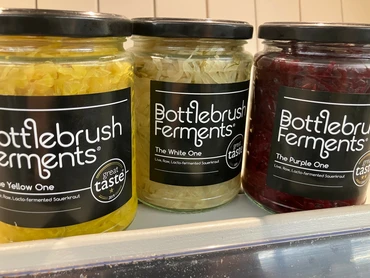
If, like many gardeners, you end up with a glut of veggies at the end of summer, learning how to pickle is a fun solution. Pickling is a great way to preserve seasonal vegetables to enjoy their fresh flavours all year round. It’s also an enjoyable hobby that allows you to get creative with recipes and seasoning blends.
Follow our guide to learn the basics of pickling vegetables at home – and don’t forget, you can stock up on jars, vinegar, and spices from our refill pantry!
Choosing Your Vegetables
Almost any vegetable can be pickled, but some of the most popular choices include:
- Cucumbers - Pickled cucumbers make classic gherkins. Opt for smaller cucumbers or specifically pickling varieties.
- Onions - Pearl onions or shallots make excellent pickled options. Pick small, firm bulbs.
- Carrots - Trim and peel carrots before pickling. Baby carrots work perfectly.
- Cauliflower - Cut cauliflower into small florets before pickling. The tender stems can be included too.
- Green beans - Pick young, tender beans and remove the ends before pickling.
- Peppers - Use jalapenos, Hungarian wax peppers or bell peppers.
Whatever you choose, pick fresh, firm vegetables without blemishes.
Making a Brine
The brine solution is what gives pickled vegetables their sour, salty flavour. Make brine by bringing vinegar, water, salt and sugar to a boil. White vinegar or apple cider vinegar both work well. Shop for both in our refill pantry.
Use a ratio of 2 cups vinegar to 1 cup water as a basic brine. Add 1⁄4 cup of sugar and 2 tablespoons of salt. Play around with different vinegars, sugars and seasonings to create your own signature brine. Spices like garlic, peppercorns, coriander and mustard seeds add extra flavour.
Prepare your cleaned vegetables and pack them into sterilised jars. Pour the hot brine over the vegetables, leaving 1⁄2 inch of headspace. Remove any air bubbles and seal the jars.
Fermenting the Pickles
Now comes the waiting game. Leave your sealed jars of vegetables on the worktop for 1-2 weeks to ferment and cure. As the brine penetrates the vegetables, they will become infused with sour flavour.
During the fermentation period, keep an eye on your pickles. If you see any scum, bubbles or cloudiness, that’s a sign of harmful bacteria. Discard the batch and start again if you observe anything unsavoury. This is why it’s important to correctly sterilise your jars before use.
Once your pickles have fermented, transfer the jars to the fridge or another cold storage place. Properly fermented vegetables canned in an acidic brine will keep for up to a year.
Enjoying Your Pickled Creations
The hard work pays off when you crack open a jar of your homemade pickles! Try them in salads, sandwiches and cheeseboards or serve them as a starter with meats and cheeses.
Making pickled vegetables is a classic preservation skill that opens up a world of flavours. With this guide, you now have the key techniques to create pickled produce you’ll be proud to share and savour.
Shop for everything you need from the Carpenter’s Farm Shop!




